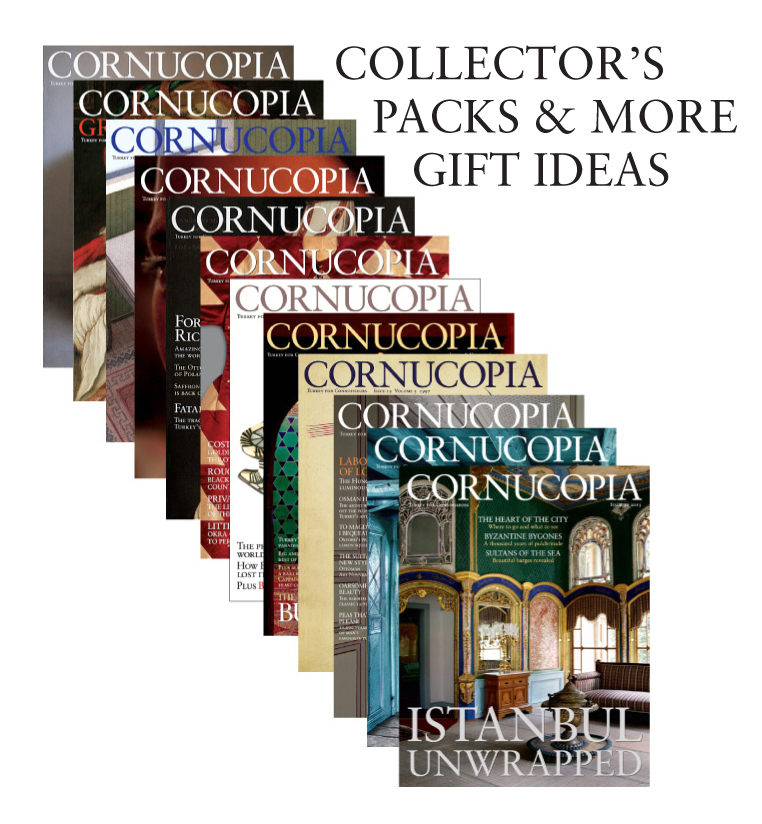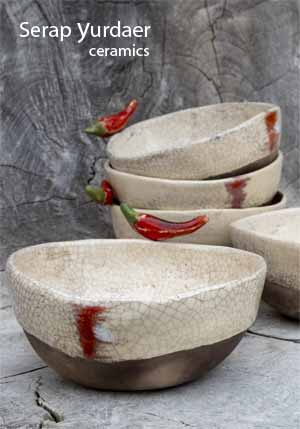On October 6 I visited the Zorlu Center in Zincirlikuyu to listen to the Cuban jazz duo pianist Gonzalo Rubalcaba and singer Aymée Nuviola perform as part of the 32nd Akbank Jazz Festival. As a genre, Cuban jazz was completely unfamiliar to me, and I went to this concert only at the insistence of a jazz-musician friend. I was, however, immediately captivated by Gonzalo Rubalcaba’s exuberant pianistic style, in which Latin rhythms are blended with surprisingly far-out atonal chords, and bowled over by Aymée Nuviola’s flamboyant stage presence and her blockbusting vocal chords (Mashallah!). I confess myself converted.
In spite of the unaccountable coldness of the auditorium (which warmed up as the torrid Cuban rhythms got under way), I felt a surge of gratitude – yet again – for the privilege of being able to attend a jazz concert. So many months passed without live music during the pandemic that I still relish the freedom of being able to sit in a concert hall and listen to a performance. Long deprivation needs balancing with a fulsome dose of whatever you have been missing, and this concert went a long way towards topping up my fuel tank with joie-de-vivre.
Gonzalo Rubalcaba’s all-too-brief Wikipedia entry belies the multiplicity of his gifts. Born into a musical family in Havana in 1963 (his grandfather was a bandleader and composer, his father a pianist) and discovered by Dizzy Gillespie in 1985, he has in the past worked with top-rank performers such as Chick Corea, Bill Evans and Charlie Haden. One of his multiple Grammy Award-winning albums is Skyline, recorded with Ron Carter and Jack DeJohnette – two more names to conjure with. His most recent production, meanwhile, is Turning Point, recorded (like Skyline) in 2018 but released on digital platforms last August. It features bassist Matt Brewer and drummer Eric Harland.
An article by Richard Scheinin on the sfjazz (San Francisco Jazz) website tells us the following:
When American jazz musicians like Dizzy Gillespie and Charlie Haden first encountered him in Cuba in the mid-1980s, they were dumbstruck by his astonishing command of the keyboard. He played in those days with an urgency and confidence that verged on cockiness. Now he is 59, and other qualities have come to the fore. He plays with exquisite touch, with charm and a sense of deep reflection – though he still improvises with an accumulating energy that can land with a rhythmic jolt.
Mr Rubalcaba’s first venture into the world of music was in fact as a drummer. It was at his mother’s suggestion that he took up the piano, receiving classical training at the Havana Conservatory. From his mid-teens onwards he worked as a drummer and pianist in the city’s hotels, dance halls and jazz clubs; then, after receiving a degree in musical composition, he immediately began full-time work as a pianist, touring Europe, Africa and Asia. In 1991 he moved from Cuba to the nearby Dominican Republic, and in 1996 from there to Miami.
Singer Aymée Nuviola met Gonzalo Rubalcaba (who is ten years her senior) while the two were still at school; their mothers were close friends. Like him, Aymée had a classical training in Havana, principally as a pianist. In 2020 she won a Grammy Award for Best Tropical Latin Album with A Journey Through Cuban Music. Like Mr Rubalcaba, she currently resides in Miami, and in addition to performing in a number of Latin genres worldwide she does work for cancer and autism charities.
An article about her on the Oncubanews website is titled ‘Aymée Nuviola: '"I make music to heal myself."' A glance at her birth chart reveals the fact that the asteroid Chiron, dubbed ‘the Wounded Healer’, is smack bang on top of her Ascendant in fiery Aries. In addition, Chiron is in square aspect to the dazzling conjunction between the benevolent Sun and generous Jupiter that beams down from her Midheaven, indicating a successful career in which she irradiates all our murkiest martyrdoms with warmth and optimism – something that it seems she came into this world to do.
It was her star-studded shock of frizzy hair that caught one’s eye when the duo first walked onto the stage to rapturous applause. (The audience seemed to know them well, perhaps because Mr Rubalcaba, at least, has performed in Istanbul several times in the past.) It was immediately obvious that Ms Nuviola is more than capable of dominating any stage you may care to name with her imperious but elegant hand gestures, her gift of establishing rapport with her listeners – and of course, her ability to turn up the volume several notches beyond the right-hand extremity of the dial. Compared with other singers who remain in the realm of the handgun, in vocal terms Ms Nuviola is a howitzer.
As for Mr Rubalcaba, his superb technique and his ability to produce sizzling improvisations, dashing up and down the keyboard in a dust-raising swirl, must surely place him among the world’s foremost jazz pianists. I note that although his Mercury (astrological ruler of the hands), is not exactly happy in slow-moving Taurus, his Uranus (known as the ‘higher arc’ of Mercury) is exactly on the Ascendant, sandwiched between Mars and Pluto. Thus he has the gifts bestowed by all three planets – energy and incisiveness (Mars), passion and depth (Pluto) and the ability to communicate a musical personality that combines sound classical training with adventurous chords, Uranus being both the avatar of Mercury (communication) and the planet of the innovative and unusual.
I have to say that not all his chords and note-clusters are pleasing: he sometimes taints them with a few too many fly-in-the-ointment minor seconds and unrelated jangles for my taste, as he did in his rendering of ‘Bésame Mucho’, but he has the musical nous to bring himself back from the brink of Schoenberg-like harmonic meaninglessness just in time. (Turkish jazz pianist Aydın Esen, by contrast, is invariably tasteful in his excursions into atonality – but it would be unfair to compare his aesthetic with that of Gonzalo Rubalcaba, which is vastly different.) Also, I must put in a word for his skills as an accompanist, this being a facet of practical musicianship that is often overlooked. He both underpinned and co-created the musical atmosphere of each item in an entirely appropriate way without ever overstepping his bounds.
On several occasions, Ms Nuviola got the audience to join in with claps and shouts of 'Colora' or 'Olé, and I was impressed by their ability to hit the right note and come in on time. They must have had some practice, though I know not where or when. (Perhaps they sing along with bachata and bossa nova in the bathroom?) She somehow managed to give us our cues while singing herself – no mean feat while the pianist is muddying the water with perplexing Latin-style cross-rhythms. The penultimate item saw Mr Rubalcaba give an amazing exhibition of fast-and-furious brillante playing. At one point he seemed to be karate-chopping the instrument with the sides of his hands, and the poor Steinway took (if I may paraphrase a number from Gilbert and Sullivan’s The Gondoliers) a right-down, regular, royal hammering. But even if no piano tuner was waiting in the wings to right the wrongs, the rapport between the two musicians was always sincere and heart-warming, and the concert ended on a rapturous note.
Time for some examples of their past performances. First, an example of Gonzalo Rubalcaba’s playing at an earlier stage in his career. Here he is in Autumn Leaves with bass-player John Patitucci and drummer Jack DeJohnette at the Mount Fuji Festival in 1991. I particularly like the bass solo that begins at 05:14:
Now, an extended recording of Mr Rubalcaba playing with José Giovanni Hidalgo on congas and timbales, José Armando Gola on bass and Horacio (‘El Negro’) Hernández on drums at the 5th Clazz Continental Latin Jazz Festival in Madrid in 2015. Of the two specifically Cuban instruments, a conga is a tall, narrow, single-headed drum, while a timbale is a shallow, single-headed drum with metal casing. Percussion fans will be certain to appreciate the conga solo that begins at 47:06:
On those occasions when Ms Nuviola joins forces with Mr Rubalcaba, the style becomes distinctively more mainstream. Here they are in part of a recording entitled Viento y Tiempo – Live at Blue Note Tokyo. ‘Bemba Colora’ was one of the pieces they performed in Istanbul:
Another of the pieces we heard at the Zorlu Center was ‘El Manisero’. The following recording from the 2021 Jazz in Marciac Festival in France illustrates the power of Aymée Nuviola’s stage presence, especially with regard to her encouragement of audience participation. The ‘double-tonguing’ she engages in at 06:35 makes one wonder whether she has ever played the trumpet:
Recently, Mr Rubalcaba’s playing has acquired a quiet intensity and even greater harmonic subtlety, as we see in this 2010 recording from Vitoria-Gasteiz, Spain. Here his fellow-musicians are Mike Rodriguez on trumpet and flugelhorn, Will Vinson on alto and soprano saxophone, Matt Brewer on bass and Clarence Penn on drums. I think the trumpet goes exceptionally well with Mr Rubalcaba’s style, as we see in ‘Peace’ (21:40). Or is this new style, smothered in suppressed smokiness, the result of Mike Rodriguez’ exceptional trumpet-playing? At 24:11 the pianist seems to be imitating Satie’s Gnossiennes, and I’d love to see the chords he hits in minutes 28 and 29 written out on paper:
Finally, a recording in which Aymée Nuviola joins Gonzalo Rubalcaba at his home, where I am pleased to see he has a Bösendorfer piano. I share his enthusiasm for the brand, which has a lighter touch than those manufactured by Bechstein or Steinway – an advantage when one wishes to whizz up and down the keyboard. At 1:32:41 there is a lovely performance by the duo of ‘My Funny Valentine’:
One wonders whether he chose the orange sneakers to go with her outfit. Trivialities aside, I very much hope the Fates will permit us to survive the forthcoming eclipse of the Moon on November 8, and that we will be able to enjoy further offerings from – and to – Euterpe, the Muse of Music, this season. Bless her boots, whatever colour they may be!












